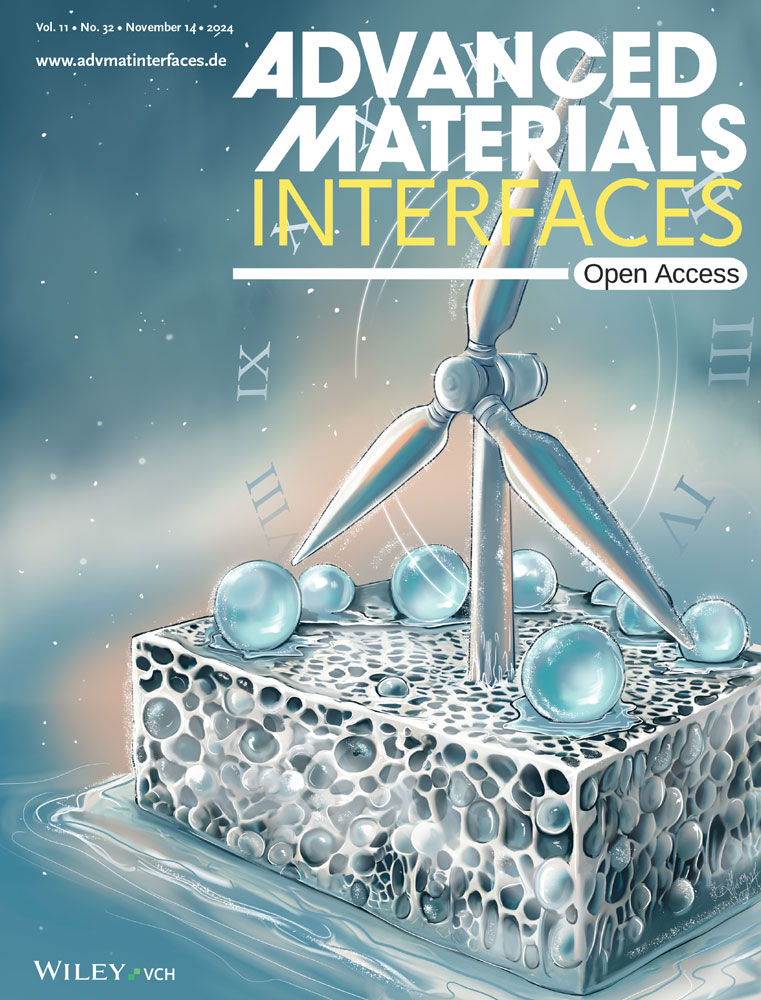探索细胞对重新进入表面地形的反应。接口19/2025)
IF 4.4
3区 材料科学
Q2 CHEMISTRY, MULTIDISCIPLINARY
引用次数: 0
摘要
研究论文DOI:10.1002/admi。namtrung Nguyen, Navid Kashaninejad及其同事研究了具有不同帽形几何形状和材料的可重新进入的微结构表面如何影响癌细胞的粘附,形态和增殖。通过整合曲率、约束和润湿性线索,该研究揭示了几何依赖的机械敏感反应,促进了对细胞-材料相互作用的理解,并提供了稳定、长期生物界面的设计策略。本文章由计算机程序翻译,如有差异,请以英文原文为准。

Exploring Cellular Response to Re-Entrant Surface Topographies (Adv. Mater. Interfaces 19/2025)
Cancer Cells on Re-Entrant Microstructures
The Research Article DOI:10.1002/admi.202500631 by Nam-Trung Nguyen, Navid Kashaninejad, and co-workers explores how re-entrant microstructured surfaces with varied cap geometries and materials influence cancer cell adhesion, morphology, and proliferation. By integrating curvature, confinement, and wettability cues, the study reveals geometry-dependent mechanosensitive responses, advancing the understanding of cell-material interactions and offering design strategies for stable, long-term biointerfaces.
求助全文
通过发布文献求助,成功后即可免费获取论文全文。
去求助
来源期刊

Advanced Materials Interfaces
CHEMISTRY, MULTIDISCIPLINARY-MATERIALS SCIENCE, MULTIDISCIPLINARY
CiteScore
8.40
自引率
5.60%
发文量
1174
审稿时长
1.3 months
期刊介绍:
Advanced Materials Interfaces publishes top-level research on interface technologies and effects. Considering any interface formed between solids, liquids, and gases, the journal ensures an interdisciplinary blend of physics, chemistry, materials science, and life sciences. Advanced Materials Interfaces was launched in 2014 and received an Impact Factor of 4.834 in 2018.
The scope of Advanced Materials Interfaces is dedicated to interfaces and surfaces that play an essential role in virtually all materials and devices. Physics, chemistry, materials science and life sciences blend to encourage new, cross-pollinating ideas, which will drive forward our understanding of the processes at the interface.
Advanced Materials Interfaces covers all topics in interface-related research:
Oil / water separation,
Applications of nanostructured materials,
2D materials and heterostructures,
Surfaces and interfaces in organic electronic devices,
Catalysis and membranes,
Self-assembly and nanopatterned surfaces,
Composite and coating materials,
Biointerfaces for technical and medical applications.
Advanced Materials Interfaces provides a forum for topics on surface and interface science with a wide choice of formats: Reviews, Full Papers, and Communications, as well as Progress Reports and Research News.
 求助内容:
求助内容: 应助结果提醒方式:
应助结果提醒方式:


